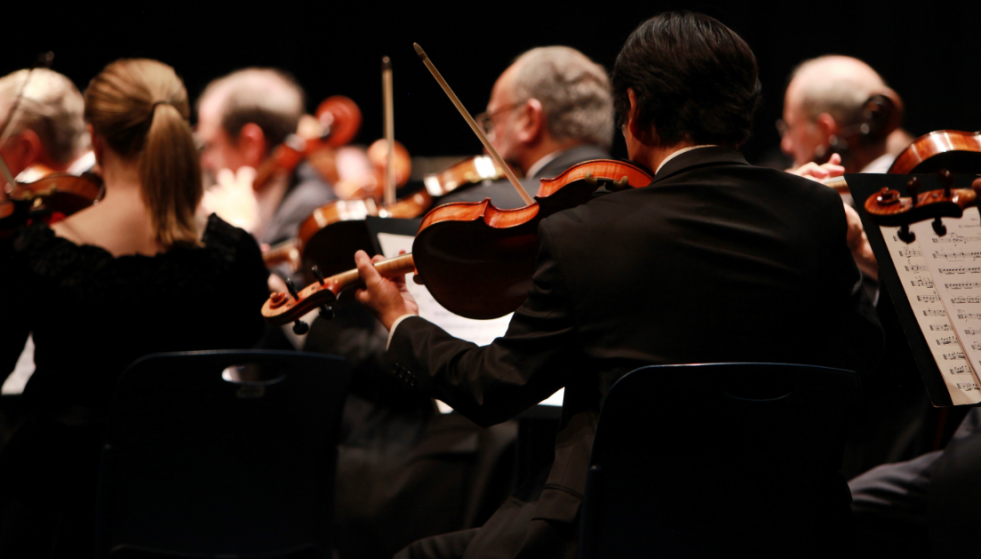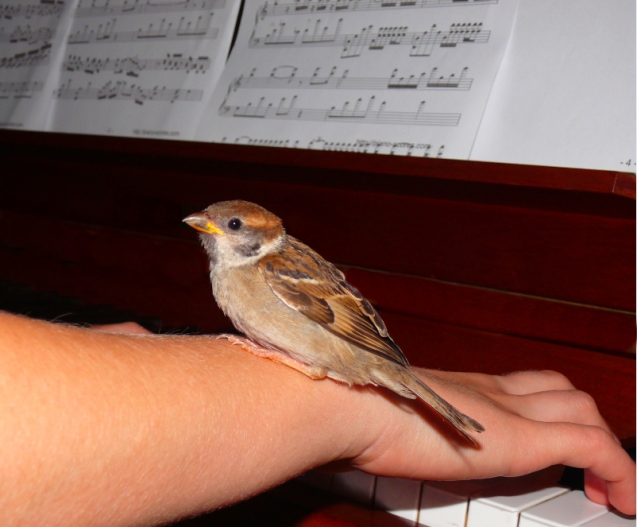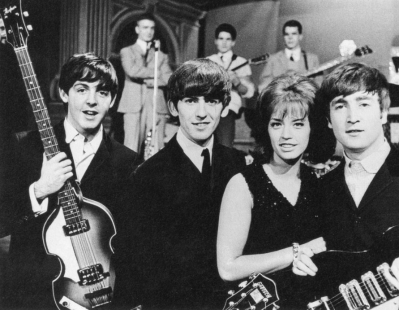Your personal music search space.
Augment your understanding of music.

______________________________________________________________________________

YMUSIC SEARCH ENGINE
Do you want to discover music with a search engine presenting features based on musical criteria, in order to know better your own individual music tastes? Try the YMusic search engine for free and explore thousands of titles: use YMusic in order to more easily find more music you could potentially like without being forced to spend too much time searching for it.
HOW DID CLASSICAL AND POP MUSIC BLEND DURING THE 20TH CENTURY?

THE BASICS OF MUSIC: HARMONY
Harmony is a very peculiar element of music. It is a multidisciplinary concept. It has inspired philosophers as well as mystics and, in everyday language, it is related to evident well-being and beauty. However, harmony is more than this. It is a theory that was constructed over the centuries and it uses specific rules to turn combinations of notes into a complex structure. It was during the 12th century that harmony, in Western plainchant, began to be an autonomous field of investigation.
The very basic level of harmony involves the notion of drone, a technique where two parts are sung simultaneously (for example by four persons) and are like two rails going the same way. More sophisticated harmony is based on a progression of three or more chords, which is, by definition, not static. Chord progressions have the purpose of accompanying the melody. At the beginning, very strict rules governed chord progressions. Chords are not only based on what we generally call notes (A, B, C, etc) but also on 'hidden notes' called harmonics. For example, B flat includes in itself a spectrum of other notes, just as light includes colors. Every single note has at least two harmonics and that phenomenon is called triad.
The twelve major notes (corresponding for example to the white and black keys that you find on a piano), on which Western music is based, generate twelve triads, and every music style in classical and popular music is based on these triads, associated to the twelve minor triads. There are two main ways to create chords : the composer can align them or can write three melodies which will form them, that last method being called polyphony. Also, creating a chord around one note of a melody, it is necessary to think of the next chord: will the first chord prepare the second?
Each chord in the scale has a name : tonic, supertonic, mediant, subdominant, dominant, submediant and leading tone. In classical harmony, the cornerstone of all these is formed by the tonic and the dominant. Why? Because the ratio between these two notes is 3/2 and that is a ratio that the human ear can perceive easily. Each key has its own tonic dominant.
Let us notice that a dissonance appears when two notes which do not fit together collide but such a dissonance can be cleverly disguised or used. It is what contemporary music composers, for instance, do. Techniques like passing notes, suspension, augmentation, diminution, etc. contribute to the integration of dissonance and are used in popular music too. Romantics for their part appreciated a lot suspension (for example Wagner in 'Tristan und Ysolde'). Jazz loves augmentation and diminution, because it makes the piece unpredictable.
Let us finally notice that composers have created new chords over time. And are constantly inspired by other traditions. In India, Bollywood music combines Indian melody and rhythms with Western harmony.

Do you want to discover music with a search engine presenting features based on musical criteria, in order to know better your own individual music tastes? Try the YMusic search engine for free and explore thousands of titles: use YMusic in order to more easily find more music you could potentially like without being forced to spend too much time searching for it.
THE BASICS OF MUSIC: MELODY AND RHYTHM
Melody
Whatever the type of music you are listening to, observing the mechanisms of a specific piece of music, then a second and a third, you could be surprized to learn that a lot of tunes which apparently sound very different from each other are actually using the same elementary musical principles and techniques.
Melody is one of them. It is a succession of musical tones. Music composers use it to generate powerful emotional responses amongst listeners. You can identify a melody easily in the very simple genre of lullabies and in a log of simple songs, like Led Zeppelin's 'Whole lotta love', where the melody conveys a story and a feeling that mixes the elements of love, patriotism, loss, longing, redemption, ...
What, in a good melody, makes it effective? We see that, everywhere in the world, melodies are generally built on five notes which form what we call the pentatonic scale (represented on the black keys of the piano). Then other notes can possibly be added. It is not the number of notes which is important here, but what one does with them: which notes, which pitch (how high or low), for which pattern (created with notes found in which scale)?
In a melody, notes must be distinct enough from each other. The smallest distance between two notes in Western music is the semi-tone (that one finds for example between F and F#). After that, there is the tone (from C to D, D to E, etc). The medieval Plain Chant is based on intervals of one tone each. It is very melodic and creates an impression of solemnity.
Once a combination of notes is defined, a mode must be chosen. A mode is a type of scale coupled with specific melodic behaviours. In Western music, modes are inspired by ancient Greek music (where seven modes are distinguished: phrygian, dorian, lydian, etc. and may be used to express moods (for example, the eolian mode is associated with sadness). Modes made some 'come back' during the 20th century.
Rhythm
Rhythm is a fundamental element of music. It is made of regular patterns which are repeated through a piece of music, each instrument having its own rhythm when necessary. In classical music, the music composer explores the spaces between the beats. In popular music, the tendency is to link rhythms to movements, for example the steps of dancers.
Rhythm is composed of four elements: accent, pulse, tempo and subdivision of the beat. Accent helps to distinguish which units are important and which ones are not. Pulse is at the contrary completely mechanical (the sound of a clock gives the right idea of what pulse is) and creates virtual accents. Tempo is about choosing the speed of a pulse. Subdivision determines the smallest units in a musical piece. All these four elements are linked.
Syncopation for its part is the sum of the unexpected rhythms in a piece of music. It plays an essential part in ragtime, jazz and swing, where there are extended syncopations. Basically, its function is to make music unconventional, going from one beat to another, 'extending' the sound. The process already exists in Bach's work (e. g.: Invention n° 6).
More sophisticated syncopations take a whole rhythmic pattern and superimpose it on another one: this is cross-rhythm and it generally involves two or more performers. One can find examples in Brahms’ music. The technique is essential in rap music, this time involving the voice as one element of the superimposition, making a rhythmic pattern out of it. And often the rhythmic pattern of the voice in rap is more complicated than those of the instruments.
Finally, we can notice that popular Western music was influenced by African and South American music rhythms. We see that for example in the work of Stevie Wonder.

Do you want to discover music with a search engine presenting features based on musical criteria, in order to know better your own individual music tastes? Try the YMusic search engine for free and explore thousands of titles: use YMusic in order to more easily find more music you could potentially like without being forced to spend too much time searching for it.
MUSICAL RHYTHMS IN NATURE: HUMANS AND ANIMALS
Is language specialized in communication of information and music specialized in communication of emotion? We may examine that question, comparing what happens when humans or animals are exposed to the first or to the second. For instance, the music of Couperin, Rameau, Fauré and Debussy were conditioned by the inflections of spoken French. How do speech patterns mix with music? Neuro-physiologists say that it comes from the fact that people learn in an implicit way the rhythms of their mother tongue. Thus music composers are naturally influenced by the rhythms of their mother tongue when they compose. In terms of language processing, it implies that people abstract 'pure rhythm' from linguistic signals. At least in English or French, studies in other languages must be done.
Question: does the native language of performers influence their music performances? That is an open question. Does it influence music composition? A researcher, Dr. Patel, explains that over 250 years, German-speaking composers, from Bach to Strauss, would be more and more influenced by their own speech patterns, but English speakers not. Nevertheless, it seems that English-speaking composers tend to alternate long and short series of chords as they alternate long and short vowels.
That said, what about the inflections and rhythms of world music? In such music, we find beat-based rhythms that elicit a rhythmic movement which can be traduced by an effective move of the listener's body. That is why Nietzsche says that 'We listen to music with our muscles'. In terms of beats, Western music is generally binary, thus regular, but contemporary composers like Morton Feldman, who wrote music that is described as ‘indeterminate music’, prove that it is not a strict rule and that the rhythm of a piece of music can be irregular. To listen to Feldman’s ‘Variations’ can be useful to understand that the notion of an irregular rhythm whose regulation is left to the assessment of the performer.
Let us notice that beat perception and beat synchronization are two different things which can nevertheless be combined: a composer can infer a regular pulse from a complex sound pattern and one result is that the mind of the listener can move in synchronization with this pulse. And a repeating time interval is a source of entertainment. Predictive, not reactive: we do not react to each beat but we try to predict what will happen next. And we model sounds in our head.
Human beings perceive and synchronize beats in a complex way that involves concepts and processes like the complexity of a heard musical stimulus, the motor flexibility of the brain of the listener, the metrical sensibility of a specific piece of music, the adaptability of its tempo or the manner in which listeners create their own musical imagery.
Some other species (like crickets or some types of frogs) can experience a certain rhythmic appreciation, but the way humans experience it is more organized and developed. Some people try strange experiences, like making dogs dance: it is called musical canine freestyle. But actually it does not work very well. It could be just a more creative and dynamic form of dressage. Gorillas actually drum and thus some researchers say that humans were not the first species to use music. But actually they do not synchronize beats as humans do, and it is very hard for an ape to learn to dance. Cockatoos, which are very demanding at the emotional level, may dance but nobody tried to discover if they can identify different tempos.
Looking at that, researchers conclude that perception and synchronization of rhythm are specific to human brain and that it illustrates how the human brain adapts itself to musical reality, at the biological level; other parts of the brain adapting themselves to other outdoor realities.

Do you want to discover music with a search engine presenting features based on musical criteria, in order to know better your own individual music tastes? Try the YMusic search engine for free and explore thousands of titles: use YMusic in order to more easily find more music you could potentially like without being forced to spend too much time searching for it.
BRAIN STUDIES: MUSIC AS A SOURCE OF PLEASURE
Neuroscientists study the neural substrates of music because the purpose of neurology is to understand the human condition and music is part of that human condition. The general public, aware of their work, can understand better the effects of music on human beings.
Music has ancient roots: archaeologists found 9,000 year-old flutes in China, which use pentatonic scales, and ethnologists found paleolithic (35,000 years old) ones in Germany. Music is part of our original human mental machinery. Darwin writes in 'The Descent of Man' (1871) that music skills are faculties which are not important at all for humanity, but that they have a mysterious impact on neural abilities. And he regrets that he did not practice music, because he was certain that if he had done it, some parts of his brain would have been in better health in his latter days. There is no proof that such a statement is true, yet it is the case that music is important in the framework of emotional arousal (expression, communication and regulation of these emotions): all listeners can experience that. So, music enables the emotional part of our nature.
How and why does music cause pleasure? Music consists of patterns coming from individual sounds which are combined, specific rules being used. And listeners perceive abstract perceptions that they like or not. Anyhow, when we hear music, we have expectations, we produce anticipatory patterns, for example temporal patterns. In the brain, there are interactions between auditory and premotor regions in matter of regions concerning sensibility to metrical regularity. The premotor cortex is linked to movement. The auditory cortex, for its part, encodes relevant sound features (pitch, duration, etc.) and their relationships. Sounds and the representations of sounds are produced in the brain and stored in the memory.
Music was listed as the fifth source of human pleasure (after romance, sex, success and sun; before food and money) in a study conducted by McGill University. It means that, like other sources, it can be judged as essential for survival and may be at the root of addictive behaviours. Its listening engages the reward system of the brain, like when that one perceives the sun or eats food. It is linked to the production of dopamine (in the case of 'chills').
However music is different in the sense that it is abstract and is not physically necessary to survive. That is why the pleasure linked to music listening is very subjective and not easily quantifiable. What we know is that it can be felt by everyone, musician or not. When do emotions arise? When musical expectations of the listeners, which try to guess the next sounds, are fulfilled after focus on the musical piece. And how can one determine the value that an individual gives to a piece of music? The field of neuro-economics has tried to answer that question using surveys, and one conclusion of such surveys is that listeners are more willing to buy music when, exposed to it, they feel that their cerebral activity is increased.
Finally, let us notice that the field of neurosciences also define music as a mechanism by which humans have learned to enhance emotional arousal and regulation by the internal action of the ancient reward system of the brain, in relationship with its mechanisms of perception and prediction.
Do you want to discover new music with a search engine presenting features based on musical criteria, in order to know better your own individual music tastes? Try the YMusic search engine for free and explore thousands of titles: use YMusic in order to more easily find more music you could potentially like without being forced to spend too much time searching for it.

HOW DID CLASSICAL AND POP ROCK MUSIC BLEND DURING THE 20TH CENTURY?
When we look back in a hundred years time, what will we see? Which music survives in the people's heart? Let us look at the 20th century. No doubt that it gave rise to a lot of big classical names, from Arnold Schoënberg to Igor Stravinsky, Pierre Boulez or Karlheinz Stockhausen. Yet for a great number of people, it seems that one of the most important musical phenomena is the way in which classical music collided with popular music. It can be observed for example in the musical work of The Beatles. At the beginning of their career, pop rock music expressed itself through quite primitive sounds (and maybe that can explain some hysterical behavior within the general public when The Beatles were giving concerts). But it changed over the years: at the musical level, what a difference there is between 'I saw her standing there' (1963) and ‘Strawberry fields forever’ (1967). The shapes of the two tunes are completely different, the last one being nurtured by classical elements.
To understand more deeply what happened, we need to know what are melody, harmony and rhythm. Actually, between classical music composers and performers, there was an agreement for some centuries over which melodic, harmonic and rhythmic patterns to use. Even when the artistic period named 'baroque' ended and a new one, called 'romanticism', appeared, the principles of music composition continued to exploit these same basic rules and elements, combining them in new creative ways. In classical music composition, 'harmony' is the part of music theory which considers the various ways to create pieces of music, examining individual sounds and chord progressions, analyzing them by ear. A chord is a little group of notes played at the same moment. So a chord progression is created with several (three, four or more) successive chords. A specific number of chord progressions, used frequently for centuries, from Bach to Prokofiev, finally became the affective patterns which founded Western classical music.
However, during the 20th century, there was an important cultural rupture. Composers chose to dismantle completely the music composition and notation system created by classical music composers. They even declared that every sound could be considered as music. It is in this way that György Ligeti used 100 metronomes as performers in a live concert. It was in 1962. An English television channel had decided to present it to the public, but at the last minute, hearing what kind of music was about to happen, changed the program and chose to broadcast a football match! And the public who heard that piece by Ligeti in the chosen live setting did not appreciate it. And actually, one result of similar choices made by 20th century composers is that a huge gap arose between the general public and formal music composers, who abandoned tonal music, where pitches and chords are put together according to a perceived sonic hierarchy, for atonal music, which does not take these natural relationships into account. A great conductor and composer, Leonard Bernstein explained it in 'The Infinite Variety of Music' (an essay related to music that he wrote in 1966): he wrote (already in 1966!) that the transformations of pop music during the early sixties in fact contributed to maintain an affinity between music and the general public. Of course, he had quickly understood very well what the Beatles were bringing to music.
In a sense, The Beatles mixed the chord progressions of Western classical music with popular music. First they used the same simple chords that everyone was using in popular music, but soon they introduced complex chords sequences in their songs. They also introduced modulation. Modulation is the fact of moving the center of gravity of a piece of music from one key to another. It is a change of tonality. Everyone can understand easily what it is while thinking about classical romanticism, which is famous for its variation of tonality (for example in 'La Moldau' by Smetana). Modulation can be compared to the movements of a lift going from floor to floor. Used gently, it can be a great advantage to compose songs.
Let us notice that George Harrison developed an interest for classical Indian music and took lessons from the well-known master Ravi Shankar. This influenced several of their compositions. For instance, they used an instrument like the cithara and they used the pentatonic which corresponds to the black keys of a piano and is predominant in classical Indian music. For his part, Paul McCartney was very interested in learning all about classical music. It is in this way that he introduced, in 'Penny Lane', the arrangement of a trumpet solo that he had heard in a BBC program. With that song and other ones, the Beatles contributed to the renewal of tonal music. McCartney also followed sessions given by Karlheinz Stockhausen, well known for being involved in electronic music and serial composition. And the result was that the Beatles conducted experiments with audio tapes, notably in 'Sergaent Pepper', composed in 1967. So, despite the fact that The Beatles had nearly no formal musical education, they picked up a lot of elements on their musical travels that helped them to compose (also when they were just starting out as performers, in particular in Hamburg).
Music theory is studied in music schools and conservatories, yet beyond itself, it evokes realities
that are familiar to all music listeners: from rhythm and harmony to emotions, discover why music is
capsizing so many hearts.
AROUND ELEMENTARY MUSIC THEORY, FROM ORCHESTRATION TO NEUROSCIENCE
WHY MUSIC? QUALITY ESSAYS ON MUSIC LISTENING FOR AVID READERS